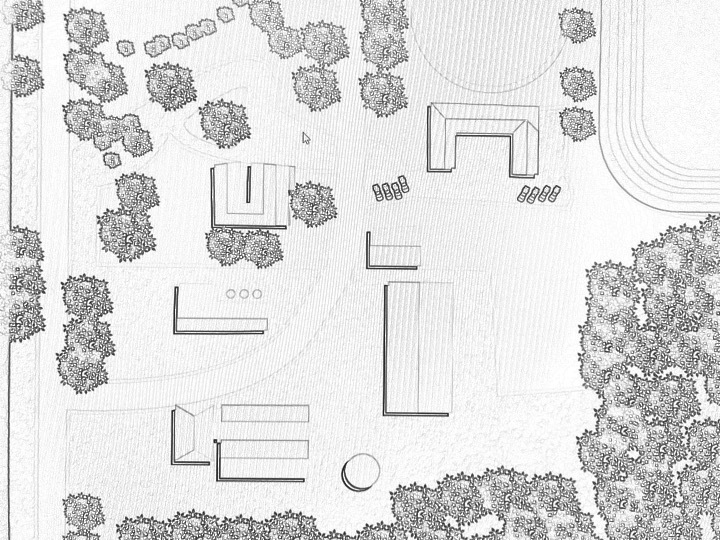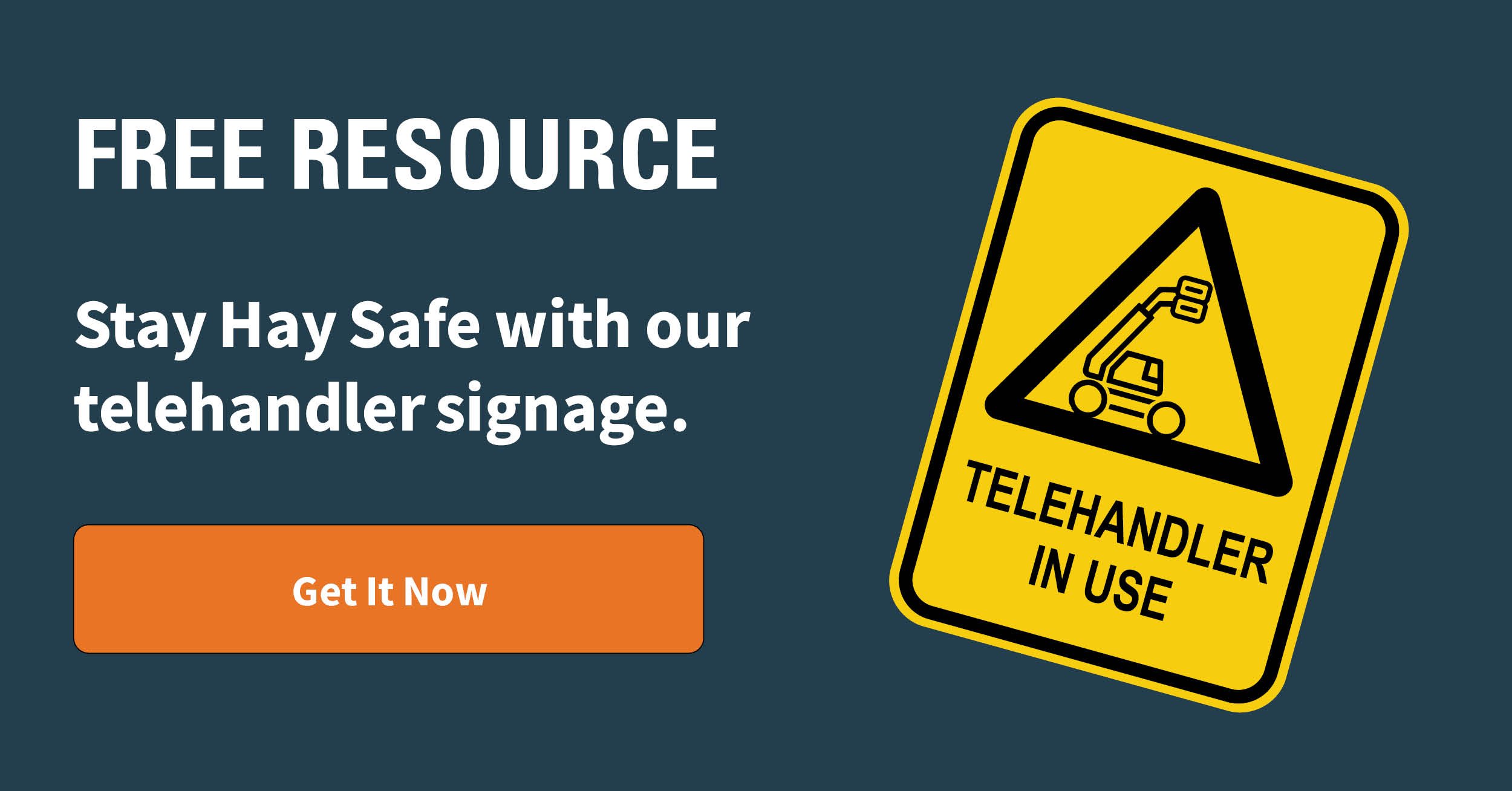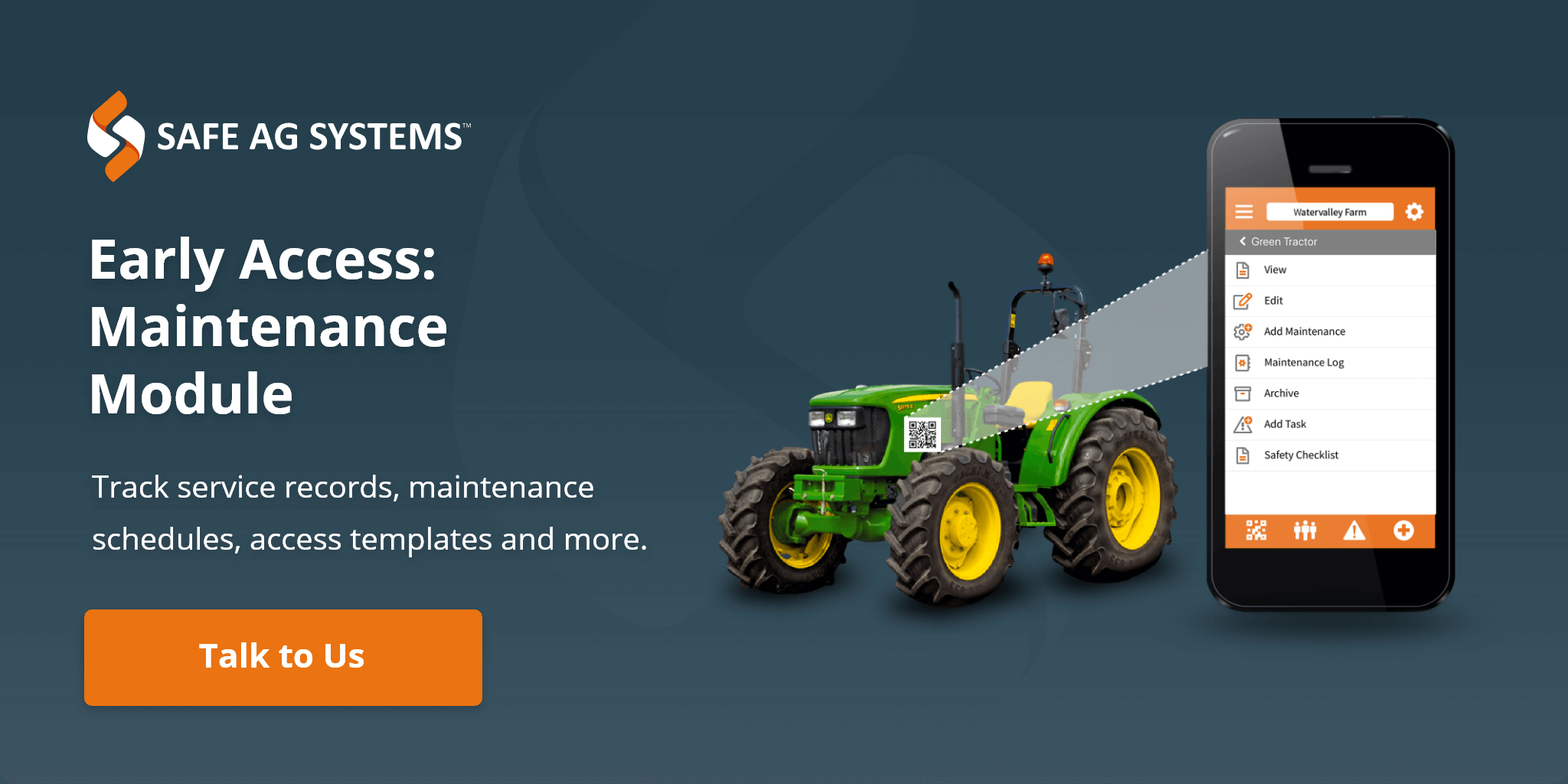Using telehandlers, tractors, forklifts, trucks and other machinery for loading/unloading or moving bales makes life a lot easier. It certainly takes the back-breaking work out of it. But these back and time-saving machines create other risks, especially the risk of a person being struck by a moving vehicle or a falling bale.
Have you planned how to keep people safe around moving vehicles?
It’s not practical for most agribusinesses to install fixed barriers to segregate pedestrians from vehicular traffic, paint yellow walkways, install CCTV or other such control measures. However, there are some things you can do to manage traffic and keep people safe.
Step One: Mapping your traffic management zone
Creating and documenting a traffic management plan isn’t as difficult as it seems. Think about how and where a person and a moving vehicle could collide. Taking the time to think this through and talking to the people involved in the job will help you manage the risk of someone getting hurt, or worse.
The easiest way to start is to sketch the layout of your property, including where your hay is located. It can be a rough sketch or something more formal, as long as you keep it recorded.

You’re going to need to mark things such as defined driving routes, traffic flow, speed limits, access and egress, loading zones and exclusion zones when you create your traffic management plan.
Think about how trucks are going to access and leave the property as well as the loading area. Where are they going to park? Is it a flat, even surface? Consider the space needed for reversing and positioning as necessary. Be mindful of overhead powerlines, trees, uneven ground, and other obstructions.
Step Two: Movement of machinery and equipment
Once you’re happy with the area the truck is going to be in, let’s think about the movement of the loading equipment that you’ll be using, such as a tractor with forks or grabs, or a telehandler.
This will need to regularly move from the stack to the truck for loading, so it will be reversing, changing direction and moving forward repeatedly.
If you can, ensure the loading zone is flat with a fairly solid surface, to prevent the risk of loading equipment overbalancing.
Step Three: Signage
Now let’s think about the risk of people around moving vehicles and in the loading zone.
We can hopefully assume the operator of the equipment is relatively safe in the cab as long as it has Falling Object Protective Structure (FOPS) to protect from falling bales. This can happen if bales overbalance and fall back on to the operator or cab, but it’s other people we need to worry about.
There are two key areas where a person and a vehicle could collide – the loading zone, and the path of trucks moving on the property, including access and egress.
The simplest way to reduce the risk here is to slow vehicles down. Set a speed limit on your property or in certain areas and put signs up where drivers can see them.
Tell drivers about speed limits before they come on-farm, perhaps through their induction process. Slowing down the loading process may also help to reduce the risk of bales being ‘pushed’ into the hay behind, causing it to become unstable and topple off.
You may decide to set traffic flow direction as part of your traffic management plan. One-way flow is easier to manage so if you choose to do this, install One Way signs and ensure people are aware of the direction.
Step Four: Alarms and Notifications
In the loading zone, as well as elsewhere on your property, reversing vehicles are a significant hazard to pedestrians. Having reversing cameras on equipment and ensuring audible reversing alarms are fitted and operational can make a big difference. Don’t allow operators to disable these, as annoying as the alarm might get. That noise could just save a life.
Step Five: Limit access to the loading zone
Think about who needs to be in the loading zone. Non-essential personnel should stay well clear, including the truck driver. Depending on your workplace, you may even be able to run some bunting or cordon off the area, and put up some signs (e.g. Pedestrians Prohibited, Telehandler in Use) to create a barrier around the loading zone to keep people out. This isn’t practical for all workplaces, and you need to find ways to exclude visitors, children and non-essential workers from the area.
Step Six: Use a spotter
Using a spotter can make a big difference to safety in the loading zone. Their job is to watch the area and alert the operator of any hazards, such as someone in the loading zone or any other risk the operator may have to deal with. Spotters also guide operators when reversing.
Clear and effective communication systems must be established before starting work – two-way radio and/or hand signals are simple options. It’s important for spotters and others to stand clear of the loading area as a falling bale can seriously injury them, or worse.
Step Seven: Visibility
Workers entering or working in the loading zone should be wearing high viz clothing as, obviously, it makes them easier to see. Workers must be vigilant and stay in the operators’ line of sight, or at least be visible to the spotter who can alert the operator if there’s a potential problem.
It’s essential that no one is standing in the vicinity of the truck being loaded, especially on the other side of the truck. Operators must be sure they know where everyone is before they move the equipment.
A few simple strategies can help you create a simple, yet effective, traffic management plan so you can #keepsafekeepfarming
For further guidance and checklists on traffic management, visit Safework Australia’s page on Workplace Traffic Management Guidance Material
Disclaimer: Content on this website may be of relevance to users outside of Australia, but content links and examples are specific to Australia. Please check with your local authority for your country and industry requirements.












